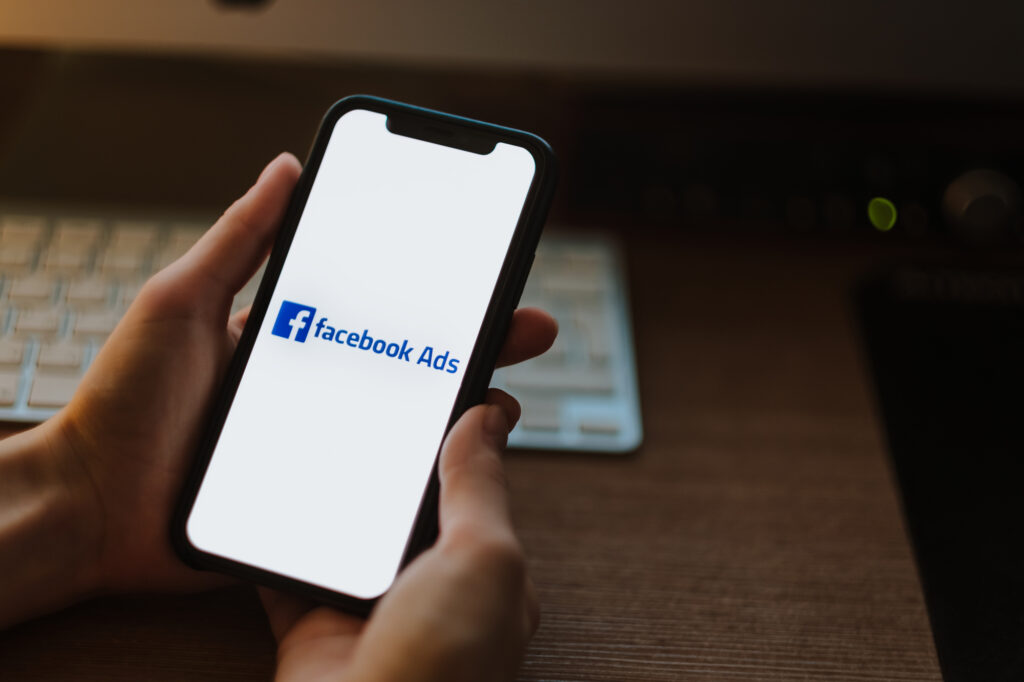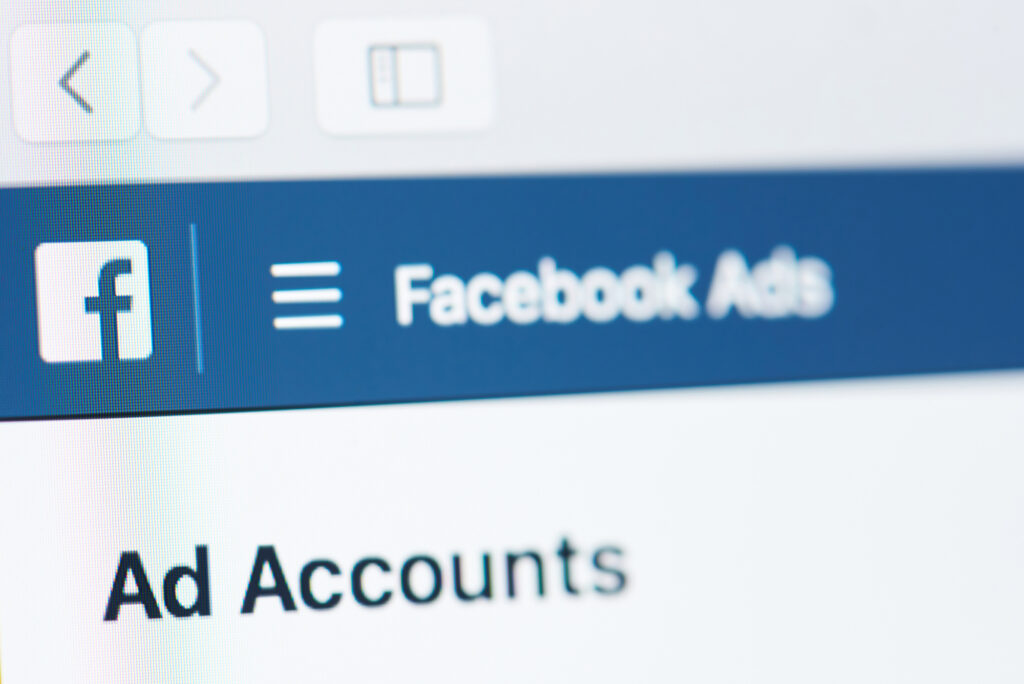More than 65% of U.S. adults use Facebook, which offers many opportunities to reach potential customers. You can not only build an organic Facebook presence but you can also do Facebook marketing for businesses.
Facebook Ads can help you reach more qualified users, resulting in more sales and leads for your business. Continue reading to learn how you can set up Facebook ads to effectively advertise to interested leads. The experts can help you if you feel overwhelmed by setting up Facebook advertising campaigns.

1. Install the Facebook pixel
The Facebook Pixel is the first thing to do when you learn how to advertise on Facebook. The Facebook pixel, a small piece of code you place on your website to collect data and track conversions, is what you need.
You can create better ads for your audience by using the Facebook pixel. This allows you to collect important information about your visitors and use that information to create ads that resonate with your audience. Before you create Facebook ads, ensure that you have installed the Facebook pixel in your website’s code!
2. Select your ad objective
Next, in our Facebook ads guide, is to choose your advertising objective. Your ad objective describes what you want to achieve through your Facebook ad. Facebook has many ad objectives that can be broken down into three categories: Awareness and Consideration.
Let’s take a look at each objective and see if it is worth choosing.
Awareness goals
Awareness objectives are a way to make people aware of your company and help them discover it. If this is your campaign goal, there are two options:
- If you want to make people aware of your brand, this is the goal.
- If you want to reach as many people as possible, this is the goal.
Take into account the following:
Consideration objectives help you nurture your audience and get them to interact with your company. They also guide them toward becoming leads. You can choose from six different ad objectives:
- Traffic: If you are looking to drive traffic to a page or an app, this is the goal.
- App installations: This objective is for encouraging people to download the app from your company.
- Engagement: If you are looking to increase engagement on a particular post or gain more likes on your Facebook page, this is the goal.
- Video views: This objective is for getting more people to view your videos.
- If you are looking to generate more leads for your business, this is the goal.
- Messages: This is the objective you need to communicate your business.
Conversion goals
Conversion objectives are a way to focus on conversion-based actions such as sales, sign-ups, or other similar actions. This option has three options:
- Conversions: This objective is for people who want to buy a product from your site or register for a webinar.
- Catalog sales: This objective is for those who want to display ads that promote products they are more likely than others to purchase and increase sales.
- Store traffic: This objective is for those who want to drive people to their physical location to make sales.
3. Name your campaigns
You’ll soon learn how to advertise on Facebook. It can be chaotic and confusing to manage multiple campaigns simultaneously if they aren’t named strategically. You may also run similar ads, but you have separate campaigns for them.
To help you keep your campaigns organized, be descriptive in naming them. You shouldn’t call your campaigns “Ad 1”, “Ad 2”, or “Version 1”, but instead, give a title such as “Christmas Pet Pajama Sale Ad”, or “Beneful Grain Free Dog Food Sale Ad”.
4. Determine your target audience
Next, we will discuss how to choose your target audience. To ensure your ads reach the right people, you need to identify who you are targeting with your ads. Consider your typical customer online or in person.
Consider the following:
- Age
- Gender
- Occupation
- Localization
- Shopping habits
- Interests/hobbies
This information will allow you to identify the right prospects to target when you create Facebook advertisements. Facebook gives you many targeting options when creating your ads.
- Core Audiences: Targeting is based on core information such as age, gender, and location.
- Targeting specific audiences: People who have previously engaged with your company.
- People who are similar to you: Target people with similar interests.
You will know when you are aware
5. Place your ad
Next, you will need to choose your ad placement. There are two options when it comes to placing ads: manual placement or automatic. The automatic placement allows Facebook to place your ads for you.
To maximize your budget, they will choose the best location while taking into account your bid. The manual placement allows you to choose where your ads should appear. This is a good option if you are more familiar with Facebook ads and know you want your ads to only appear in specific places.
You can choose your bidding options. It’s best, to begin with, for automatic placement to see where your ads perform the best. Then, you can move to manual placement.
6. Set your budget and timetable
You must set your budget and schedule before you can create a Facebook advertisement. You will need to decide how much money you are willing to spend on a campaign to set your budget. There are two types of budgets you can choose from daily and lifetime.
- Daily budget: This is your daily budget. It’s the amount you are willing to spend each day on a campaign. Your ad will cease running once you reach this daily budget and it won’t resume running the next day.
- Lifetime budget: This is your total budget for the lifetime of your campaign. This budget is the total amount you want to spend on your ad. It can be broken down into a daily budget.
You should set a daily budget to drive success with your ads. This is not the same as your lifetime budget. You could run out of money on your first day, and lose valuable leads later in your week if you don’t have a daily budget.
7. Select your ad format
Facebook advertising for your business must be chosen in an ad format. Facebook allows you to choose from many formats for your ads. There are many formats you can choose from, including:
- Image ads
- Video ads
- Carousel ads
- Slideshow ads
- Ads from the Collection
- Instant Experiences
- Messenger ads
- Stories ads
Formats to determine which type of ads will produce the best results.
8. Test and monitor your ads
Monitoring and testing your ads is the last topic we will cover in our Facebook ads guide. Because they ensure your audience has the best possible ad experience, monitoring and testing are critical components of successful ads. You should monitor your ad campaigns before you launch them.
Monitoring metrics such as:
- Impressions
- Clicks
- Clickthrough Rate (CTR)
- Conversions
- Frequency
These metrics will help you determine if your ads deliver the results you want. If your ads don’t produce the desired results, optimize them to make them better. You can run A/B tests and test the different elements of your ads to determine what you can do to improve their performance.
Make sure you only test one element when testing your ads. You will end up with a mess and not be able to see the true impact of your ads. After your test ends, you should not alter your ad.
74% of consumers use social media to make a purchase decision
A stellar social media presence will make it easy for them to make a decision. Request a free proposal to see how your brand can make it happen today.

Start with Facebook advertising for your business
You now know how to create Facebook ads. Kobe Digital can help you if you feel overwhelmed by the task of creating a Facebook advertisement. Kobe Digital can help you make Facebook ads that get results.